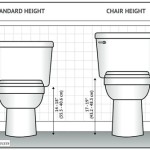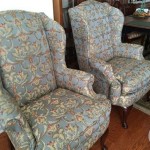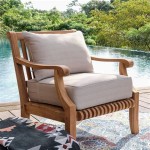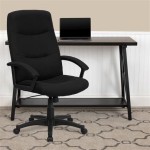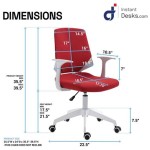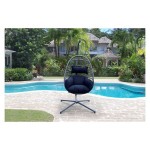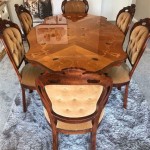Dining Table For 10 Chairs: A Comprehensive Guide
A dining table designed to accommodate 10 chairs signifies a considerable investment in communal dining and entertaining. Such a table serves as a focal point for large families, individuals who frequently host gatherings, or those prioritizing spaciousness in their dining area. The selection of a dining table for 10 chairs requires careful consideration of several factors, including dimensions, materials, style, and the overall aesthetic of the surrounding space. This article explores these key aspects, providing a comprehensive guide to assist in making an informed decision.
Determining the Appropriate Dimensions
The primary consideration when choosing a dining table for 10 chairs revolves around its dimensions. The goal is to select a table that comfortably seats 10 individuals without overcrowding and allows sufficient room for movement around the table. A standard guideline suggests allotting approximately 24 inches of width per person for comfortable seating. Applying this rule to a 10-person table necessitates a minimum width of 8 feet (96 inches). However, the shape of the table also plays a crucial role in determining the ideal dimensions.
Rectangular tables are a common choice for accommodating a large number of diners. For a rectangular table seating 10, a length of at least 96 inches is recommended, with a width ranging from 40 to 48 inches. This allows ample space for place settings, serving dishes, and centerpieces without feeling cramped. A wider table exceeding 48 inches may be considered if space allows, providing additional room for elaborate dinner arrangements or buffering space between diners.
Oval tables offer a slightly different dynamic. While they require similar overall dimensions to rectangular tables designed for the same number of people, the curved edges create a more intimate and conversational atmosphere. An oval table seating 10 should ideally measure at least 96 inches in length and 40 to 48 inches in width at its widest point. The absence of sharp corners also makes oval tables a safer option, especially in homes with young children.
Round tables present a unique challenge when accommodating a large group. To comfortably seat 10 individuals, a round table needs to be quite large, typically measuring at least 60 inches in diameter. This large diameter can pose logistical challenges in terms of available space within the dining area. While round tables foster a sense of equality and facilitate conversation among all diners, they may not be the most space-efficient choice for seating 10.
Square tables for 10 are less common due to their large footprint. A square table capable of seating 10 would need to be exceptionally large, likely requiring a custom build. The dimensions would need to be considerable, likely exceeding 60 inches per side. The considerable size can make conversation difficult across the table, potentially diminishing the communal dining experience. Furthermore, the sharp corners may present safety hazards, particularly in smaller dining spaces.
Beyond the table's surface area, the leg placement also influences seating comfort. Legs positioned too close to the corners can restrict legroom and limit the number of chairs that can be comfortably accommodated. Tables with pedestal bases or trestle designs often provide more legroom and flexibility in chair placement.
Material Selection Considerations
The material composition of a dining table significantly impacts its durability, aesthetics, and overall style. Common materials used in constructing dining tables for 10 chairs include solid wood, wood veneer, glass, metal, and stone. Each material possesses distinct characteristics that influence its suitability for different needs and preferences.
Solid wood tables are prized for their durability, natural beauty, and timeless appeal. Hardwoods like oak, maple, cherry, and walnut are particularly popular choices due to their strength and resistance to wear and tear. Solid wood tables can withstand years of use and can be refinished to restore their original luster. However, solid wood tables are typically more expensive than tables constructed from other materials. Furthermore, wood is susceptible to changes in humidity and temperature, which can cause it to expand or contract, potentially leading to cracks or warping if not properly maintained.
Wood veneer tables offer a more cost-effective alternative to solid wood. Veneer tables consist of a thin layer of real wood adhered to a core material, such as particleboard or MDF (medium-density fiberboard). While veneer tables lack the inherent durability of solid wood, they can still provide a similar aesthetic at a lower price point. The quality of the veneer and the core material significantly impact the table's overall durability. High-quality veneer applied to a sturdy core can provide years of reliable use. However, veneer is susceptible to chipping and peeling, particularly along the edges.
Glass-top dining tables offer a modern and elegant look. Glass tabletops create a light and airy feel, making them an excellent choice for smaller dining spaces. Tempered glass is typically used for dining tables due to its strength and safety features. If broken, tempered glass shatters into small, blunt fragments rather than sharp shards. Glass tabletops are relatively easy to clean but can be prone to scratches and fingerprints. The base of a glass-top table can be constructed from various materials, including metal, wood, or a combination of both.
Metal dining tables offer a sleek and contemporary aesthetic. Metal is a durable and long-lasting material that can withstand heavy use. Metal tables are often powder-coated to provide a protective finish that resists scratches and rust. Metal tables can be paired with various tabletop materials, including wood, glass, or stone. However, metal tables can sometimes feel cold and industrial, particularly in warmer climates. The choice of metal should be carefully considered to ensure it complements the overall style of the dining space.
Stone-top dining tables, such as those made from marble or granite, exude luxury and sophistication. Stone is an exceptionally durable and heat-resistant material, making it ideal for dining tables. Each stone slab possesses unique veining and patterns, adding a touch of individuality to the table. However, stone tables are typically very heavy, requiring a sturdy base and careful handling during installation. Stone is also porous, which can make it susceptible to staining if spills are not promptly cleaned.
Coordinating Style and Aesthetics
The style and aesthetics of a dining table should complement the overall design of the dining area and the adjacent spaces. Considerations include the architectural style of the home, the color palette of the room, and the existing furniture. A cohesive design creates a harmonious and visually appealing environment.
For traditional dining rooms, a solid wood table with ornate detailing and a rich finish is often a suitable choice. Traditional tables may feature carved legs, decorative aprons, and a substantial presence. Fabrics used on the dining chairs should also reflect the traditional style, with options like damask, velvet, or leather. A formal chandelier and elaborate window treatments can further enhance the traditional aesthetic.
Modern dining rooms often benefit from a minimalist approach. A glass-top table with a sleek metal base or a solid wood table with clean lines and a light finish can complement a modern aesthetic. Chairs with simple silhouettes and neutral colors are often preferred. Consider incorporating elements of natural light and geometric shapes to further enhance the modern style.
Rustic dining rooms embrace natural materials and a warm, inviting atmosphere. A solid wood table with a distressed finish or a reclaimed wood table can be an excellent choice. Chairs with woven seats or exposed wood frames can complement the rustic aesthetic. Textural elements like burlap, linen, and exposed brick can further enhance the rustic feel.
Contemporary dining rooms offer a blend of modern and traditional elements. A dining table with a unique shape or an unexpected material combination can add visual interest. Chairs with bold colors or sculptural designs can complement the contemporary aesthetic. Incorporating statement lighting and artwork can further enhance the contemporary style.
Beyond the table and chairs, accessories also contribute to the overall aesthetic. A centerpiece, such as a floral arrangement, a candle display, or a sculptural object, can add a focal point to the table. Table linens, such as placemats, runners, and napkins, can also enhance the style and protect the table's surface. The choice of tableware, including plates, glasses, and silverware, should also complement the overall design of the dining space.

Bespoke Solid Oak Jacobean Style Refectory Dining Table 10 Chairs

Large Farmhouse Table Long Kitchen Rustic Dining 12 Foot 13 14 All Sizes Stains Etsy

Rustic Farmhouse Dining Table Set Distressed Wood Custom Sizes Etsy

Seats 10 Kitchen Dining Tables The Home

Luxury 10 Seater Royal Dining Table Set Wooden Bazar

Chateau 11 Piece Dining Set 48 X 84 127 Extension Weave Table And 10 Chairs

Rustic Farm Table Set 10 Foot Distressed Wood Dining With Chairs Etsy

Teak Dining Set 10 Seater 11 Pc 117 Double Extension Rectangle Table And Sack Arm Chairs Outdoor Patio Grade A Wood Wholesaleteak Wmdssk8

Stunning Bespoke Ref No 00059a Regent Antiques

71 Luxurious Marble Dining Table For 6 10 People Modern 6ft Large Gaming Computer Desk Family Rectangular Dinner With Adjustable Leg
